Pond 3 Fish Species Information & Facts
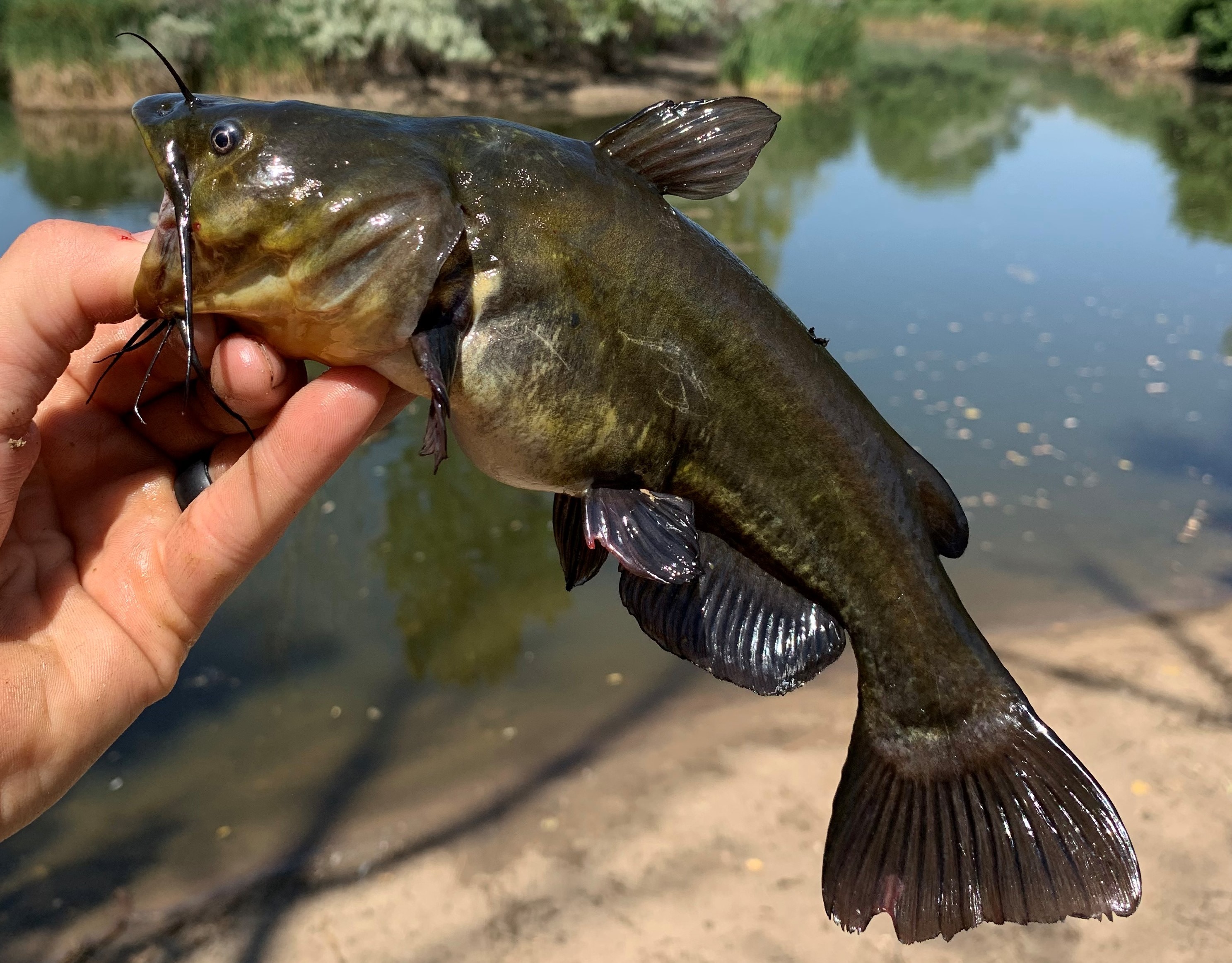
Black Bullhead Catfish (Ameiurus melas)
Alternate Names
Mud catfish
Size Range
Adults average 5-10 inches
Description
Black bullhead are one of two types of catfish in Pond 3. They are native to areas east of the Rocky Mountains in the United States, southern Canada, and northern Mexico. This fish has become established, however, in many of Utah's warm waters, where it is now a popular sport fish. The black bullhead is especially common in Utah Lake. The black bullhead is an opportunistic bottom-feeder, eating fishes, many types of invertebrates, plant matter, and detritus. The species spawns from late spring to early summer; nests and young are guarded by parents. It is typically black or dark brown on the dorsal side of its body and yellow or white on the ventral side.
How to fish for Black Bullhead
Black bullheads can be caught using similar techniques as many other catfish, although their small size may require smaller bait and hooks. They are most active during the night and tend to bed in shady areas during the day, but will still feed during the day. They will attack active baits like spinners, but can be most easily caught with soft lures and food baits on the bottom or suspended in the water collumn. Worms, hotdogs, liver, and other baits that utilize smell can be especially effective in Pond 3.
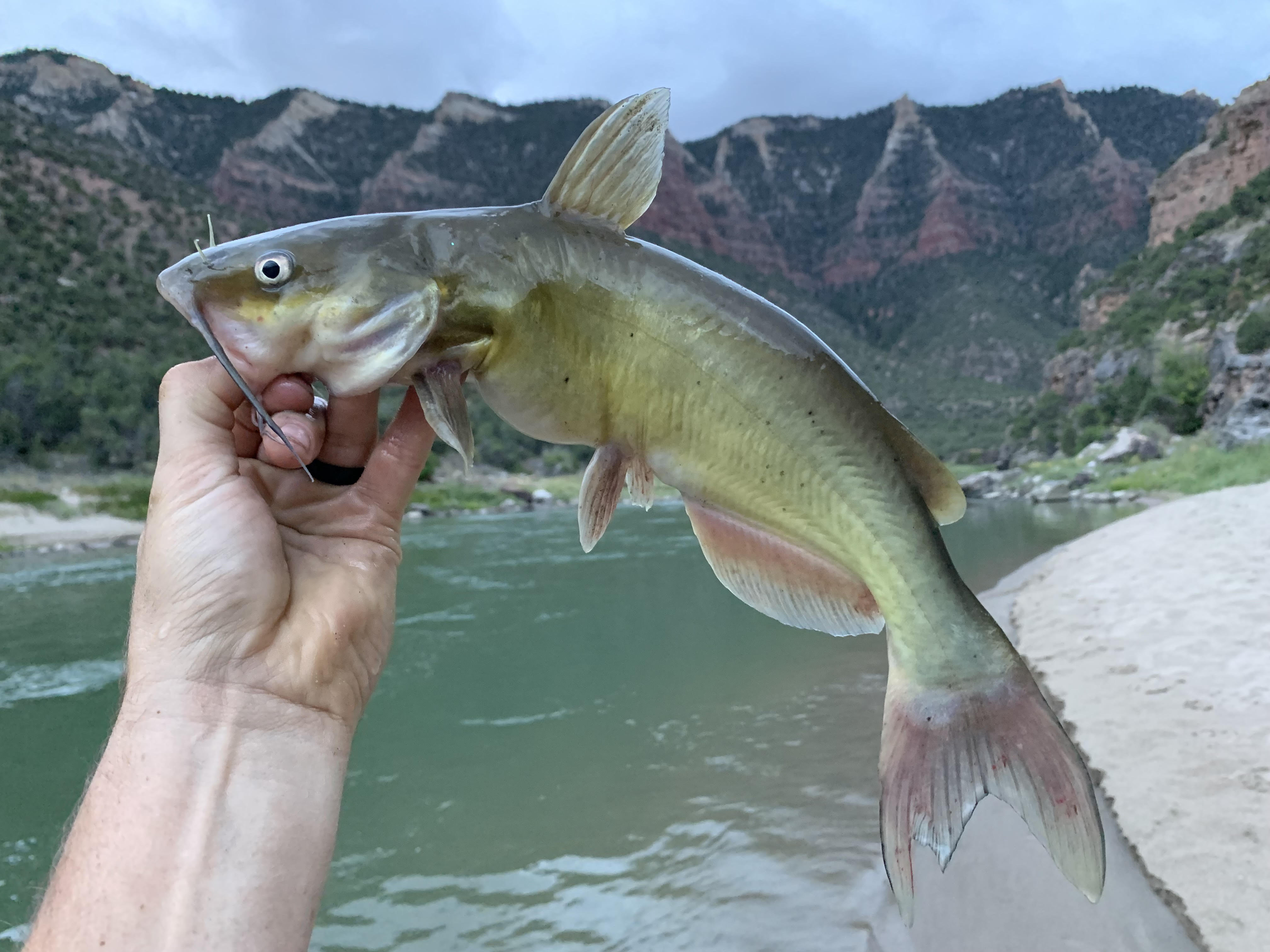
Channel Catfish (Ameiurus melas)
Alternate Names
Channel Cat
Size Range
Adults average 10-20 inches
Description
Channel catfish are the larger, but less plentiful, catfish species in Pond 3. They are distinguished from bullhead catfish by their deeply forked tail fin. Young channel catfish usually have dark spots on their sides, which fade as they mature. It is one of the most commonly sought after sport fish in the United States and is the official state fish for Nebraska, Missouri, Kansas, and Tennessee. In Utah channel catfish are established in some of the major rivers, lakes, and are popular at a number of ponds where they can grow over 39 inches and 32 pounds. Albino catfish were also stocked into Pond 3 in 2022.
How to fish for Channel Catfish
Channel catfish can be caught using similar baits, lures, and techniques as black bullhead. They will likely be found at the bottom of the pond and able to eat larger hooks and baits. As one of the larger fish in Pond 3, they can provide a substantial fight if hooked.

Smallmouth Bass (Micropterus dolomieu)
Alternate Names
Smallie, black bass, bronzeback, brown bass, redeye
Size Range
Adults average 10-16 inches. Smallmouth bass can grow 16-24 inches in quality populations.
Description
Smallmouth bass are one of two species of “black bass” with the other being the more popular and widely distributed largemouth bass. Although smallmouth bass are not as popular or widely distributed as their genus mate, their popularity is increasing steadily. The common name “smallmouth bass” is appropriate given that their mouths are considerably smaller than those of the largemouth bass (the maxillary bone usually does not extend past the center of the eye). The spiny and soft-rayed parts of the dorsal fin are continuous. Although coloration varies significantly with water clarity and habitat, smallmouth bass are mottled with dark vertical bars; largemouth bass have a singular longitudinal stripe running the length of the body.
How to fish for Smallmouth Bass
Although smallmouth bass make excellent table fare, most anglers pursue smallmouth bass for sport. Experienced bass anglers agree that pound-for-pound; smallmouth bass are stronger and more acrobatic fighters than most freshwater sport fish. Several powerful surges towards the bottom or jumps at the surface are common, and many anglers are fooled into thinking a much larger fish is on the line. Rule of thumb: the warmer the water, the better the fight.
Though smallmouth bass can be caught throughout the year, fishing success increases dramatically in the spring as waters temperatures rise and food becomes increasingly available. During this transition period, reaction baits such as crankbaits and suspending jerkbaits can be very effective for coaxing lethargic bass to bite. As waters approach 55-60 °F in May, smallmouth bass become increasingly active as they prepare to spawn. In lakes, smallmouth bass also seek shallow, flat, gravel bottom for spawning, but relate more to structure (large rocky substrate, docks) than current breaks to ambush prey. In both instances, hard baits (crank baits, jerkbaits, spinnerbaits) and soft baits (grubs on a football head jig, finesse worms rigged drop shot) can be effective depending on the location and how the fish are relating to available cover.
Spawning occurs as temperatures reach 60 °F in late May and June. Male smallmouth bass build nests (beds) to attract females and together they spawn over gravel substrate in 5-20 feet of water, depending on water clarity. Spawning adults will aggressively defend their nests from any intruders, including soft plastic baits, but you will need some patience and experience on the water to locate nesting sites.
As summer progresses and lakes become thermally stratified, smallmouth bass will spend much of the day resting on the bottom. Dragging soft plastics and drop-shotting finesse worms on the bottom are the primary methods of choice. During low light periods between dawn and dusk, smallmouth will venture into the shallows to hunt for food. In early morning and late evening, a variety of shallow diving or surface baits will work; favorites include spinnerbaits, soft jerkbaits, and poppers. Time periods when topwater is effective can be very short, especially when targeting larger fish, but the surface explosion of a lunker smallmouth is worth the effort.
Fall is another transitional period as temperatures fall, food becomes increasingly scarce, and predatory fish like smallmouth look to pack on fat reserves for the winter. Many of the tactics used during the summer carry over to the fall, including bottom fishing soft plastics during the day and fishing reaction baits near the surface during low light periods. As winter approaches, smallmouth will seek out deeper water and become increasingly inactive and difficult to catch.

Wiper (Monroe chrysops x Monroe saxtilis)
Size Range
Average 12-24 inches. Wiper can get into the 7 to 10 pound range regularly.
Description Wiper are a hatchery-produced hybrid between white bass and striped bass. Its appearance is intermediate between the two parent species. It has six to eight dark horizontal stripes over a silver-white background with a dark charcoal to black back. Because wiper do not naturally occur, they can be found only where they have been introduced by man. They can be a very aggressive fighter on the line and have become a very popular sport fish in Utah. Willard Bay Reservoir, Lake Powell, and Newcastle Reservoir are known hotspots in Utah with the state record being 31 inches and 16 pounds.
How to fish for Wipers
Typically, the most common way to fish for wipers is trolling lures such as "Producers", rapalas, or other crankbaits and spinners. They can also be caught with dead anchovies or other minnows, and occasionally smaller wipers are caught using worms. Since the wiper is a warm water fish, late summer to fall fishing the action can really heat up.
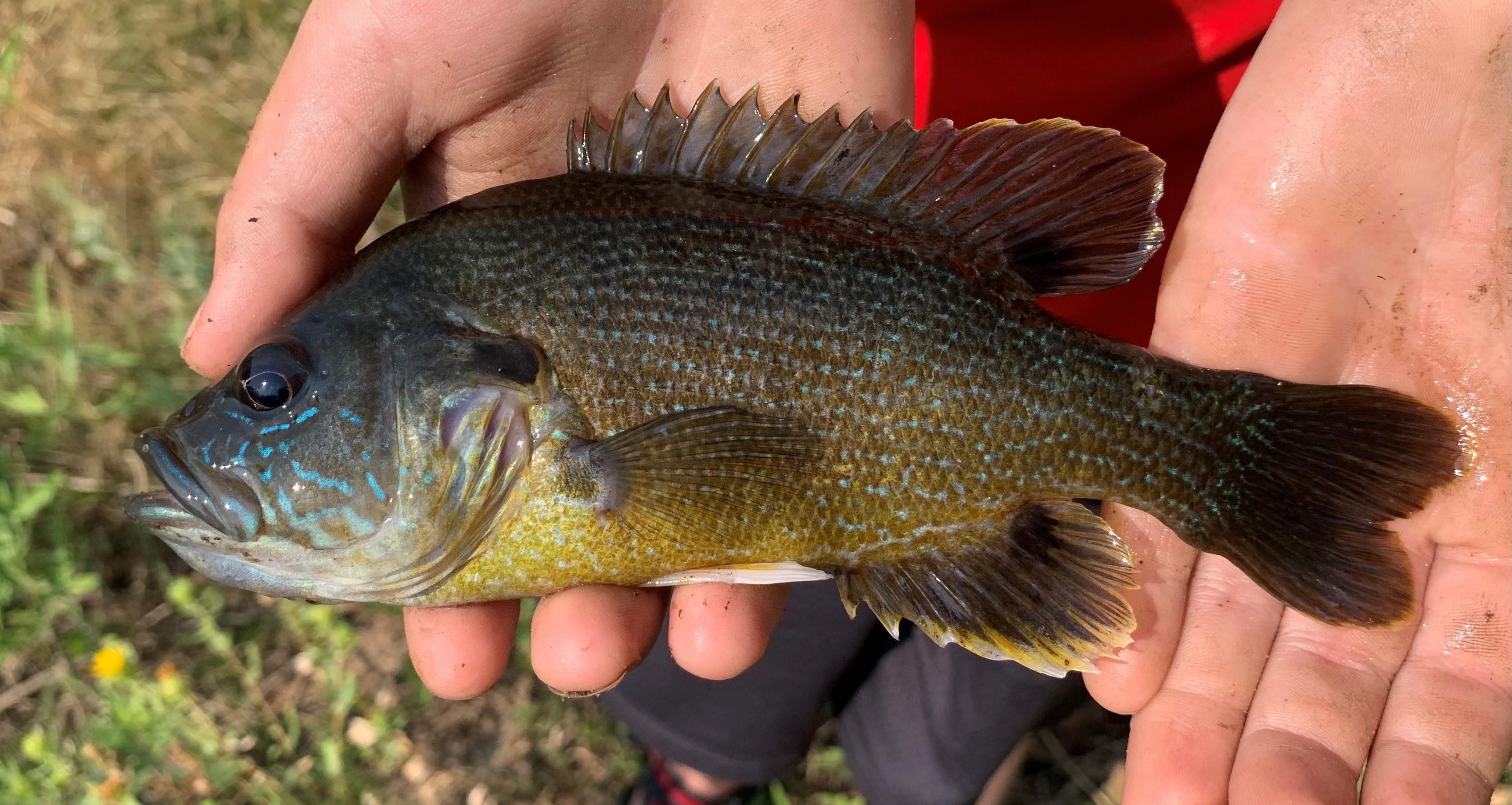
Green Sunfish (Lepomis cyanelius)
Size Range
Adults average 3-7 inches
Description
Green sunfish are stockily built, and from a side view have a body shape like bluegill. They can have bright blue lines on their faces, bright blue spots on the upper half of their body, and yellow to green colors on the lower half. Mature green sunfish can have yellow color on their fins. Their mouths are quite large and strong in comparison to the bluegill. The green sunfish has no teeth near the tip of the tongue, and has a dark spot at the base of the last three soft dorsal rays. They can hybridize with bluegill, producing a hybrid sunfish often refered to as "Greengill."
How to fish for Green Sunfish
This species is an aggressive feeder, sometimes striking lures almost as large as they are. Most active or passive baits, plus a wide variety of artificial lures, will take them. Because of their robust build, they are strong fighters on light tackle.
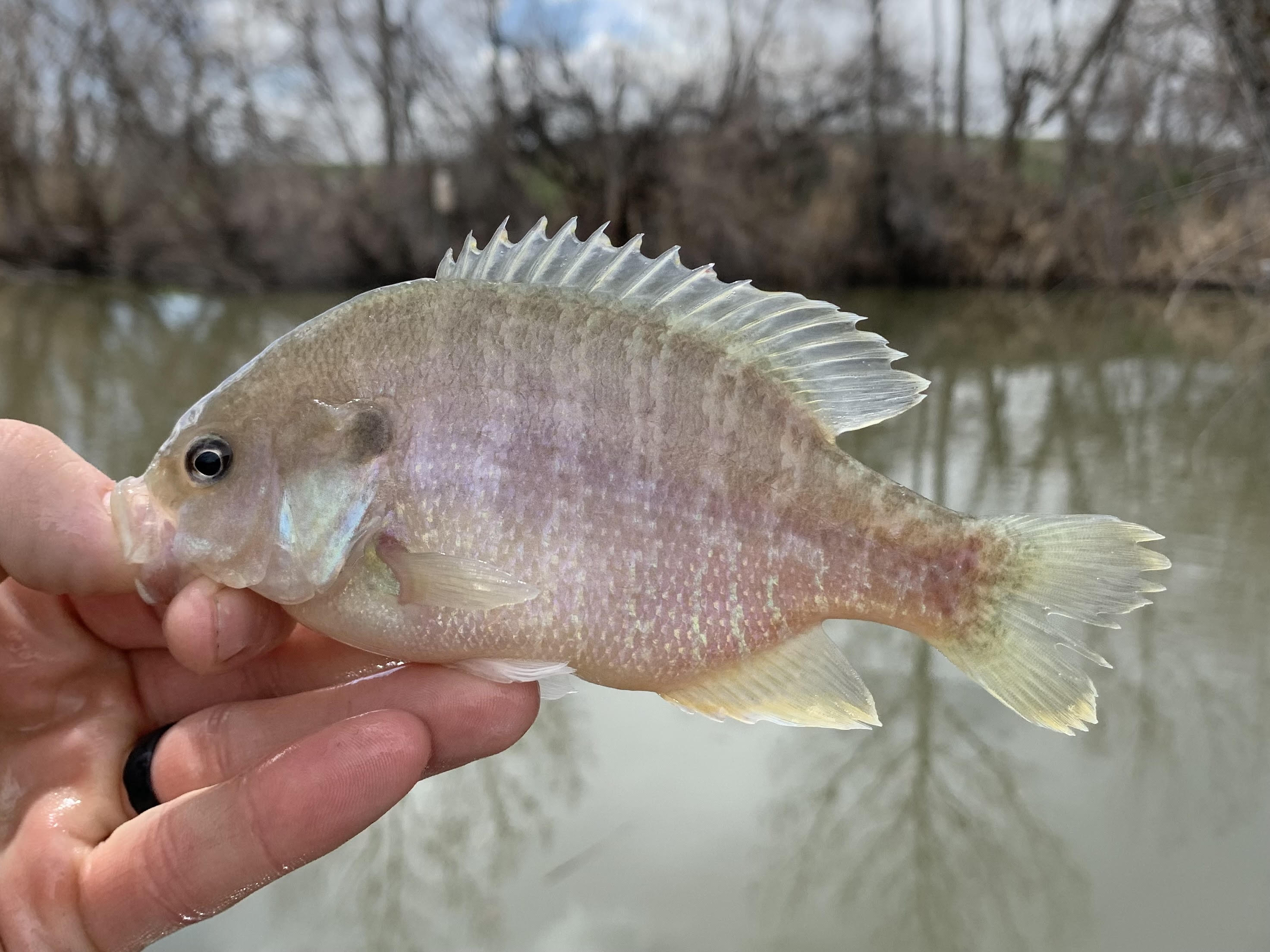
Bluegill (Lepomis microchirus)
Alternate Names
Bream, Brim, Sunny, Copper Nose
Size Range
Adults average 4-10 inches
Description
Bluegill are similar in appearnce to green sunfish and are named after the dark flap over their gills. They can have simlir coloring as green sunfish, but with vertical bars on their sides. Bluegill are less abundant that green sunfish in Pond 3. They can hybridize with green sunfish, producing a hybrid sunfish often refered to as "Greengill."
How to fish for Bluegill
Bluegill are agreesive feeders and can be caught using many of the same tactics for green sunfish. Bluegill can become very bold and lose their fear of humans.
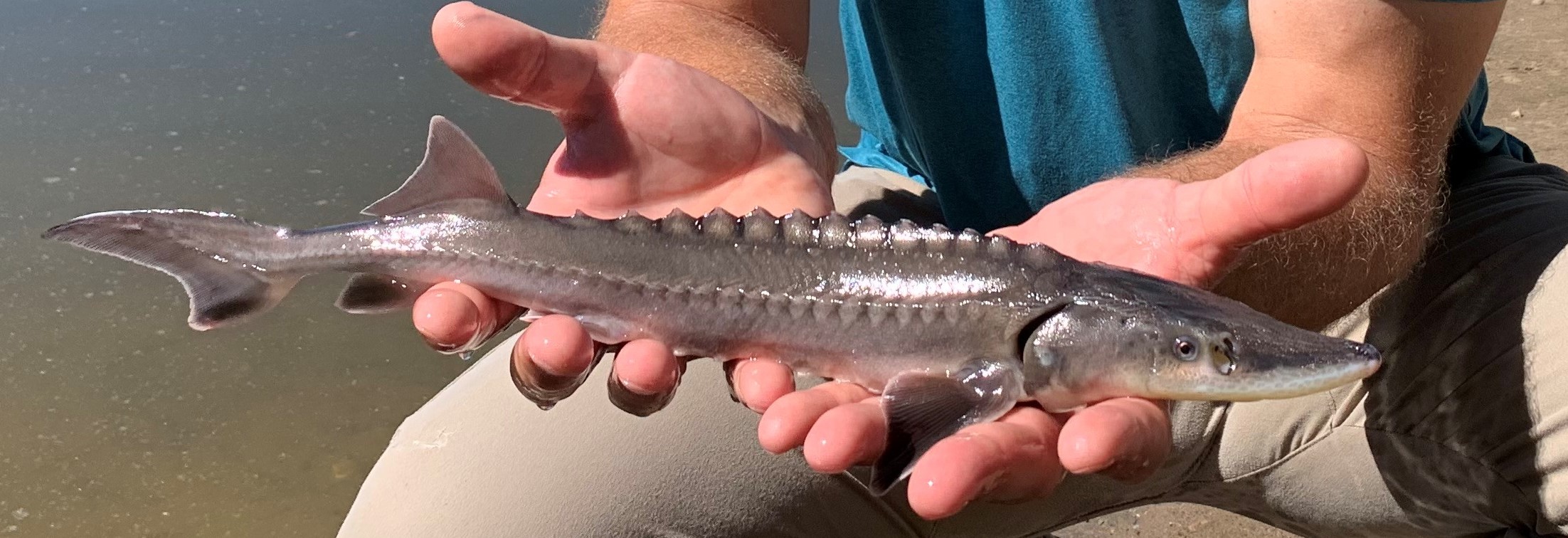
White Sturgeon (Acipenser transmontanus)
Size Range
Adults 5-7 feet long are not uncommon in river systems. The largest white sturgeon on record are over 12 feet long and weigh more than 1,000 pounds.
Description
White sturgeon typically live in large rivers where they can grow over 12 feet long and live more than 100 years old. They have also been proven to grow large in conrtolled pond systems under the right conditions. They lack traditional scales, but are covered in bony plates called scutes that give them their dinosaur-like appearance. They have small eyes and mouths are located on the underside of their heads. They spend most of their time on the bottom of ponds and need to have water passing over their gills in order to breath. The sturgeon in Pond 3 were first introduced in 2022 as 12 -18" fish and will likely be less than 3 feet long for 3-5 years. Please be very careful
How to fish for White Sturgeon
Strong smelling baits on the bottom of the pond will attract sturgeon, but patience is critical as bites will be rare. Dead minow, pickled herring, or a wounded jig are good options. If you catch a sturgeon, please handle it as little as possible. Use two hands to cradle the fish. If the fish is larger than 3 feet please only handle it at the water's surface. Never drop or lay them on the ground. Be careful to not damage the mouth parts when removing the hook. When sturgeon are less than 3 feet long, their tail and backbone can be damamged by bending stress. Becasue they are such a long-lived species, it is imperitive to handle them the care.